JavaScript is disabled. For a better experience, please enable JavaScript in your browser before proceeding.
1 - 20 of 21 Posts
2003 Kawasaki Ninja 500r
07 Ducati SS800 '95 Ducati 900SS/SP '19 Honda CBR650R
2003 Kawasaki Ninja 500r
07 Ducati SS800 '95 Ducati 900SS/SP '19 Honda CBR650R
2003 Kawasaki Ninja 500r
2003 Kawasaki Ninja 500r
1 - 20 of 21 Posts
Top
Common Tread Supreme Ruler Lance made one of his regular sojourns to ZLA headquarters in Philly from his lair in Ohio in early fall. Although he was up for the trip, his tires were not. His rear Dunlop had seen better days, so he took a little detour up the hill to Lemmy Mountain for some tire attention before making the ride home.
Our first order of business was to eat the doughnuts Lance brought, washing them down with coffee. If you’re swapping tires before 9 a.m., we recommend you do the same. (If it is after 9, please swill beer instead.)
For some reason, we don't always feel comfortable handing off our tire-changing jobs to the "professionals." Photo by Lance Oliver.
Lance's editorial comment #1: Lemmy likes to dive right into a job, but I like to think about the meaning of it all. Such as why do I always change my own tires? There are a couple of good reasons. First, you can save money by buying your motorcycle tires from RevZilla at a good price, probably better than what your local shop charges. Plus, you'll save the fee for changing them. With shops charging $20 to $40 per wheel, the equipment you buy to do it yourself will pay for itself before long. The second reason is that you'll save yourself some time, and that's even more valuable to me than money. I can change my own tires faster than I can make an appointment, take the wheels off the bike, take them to the shop and wait for someone to do the work. I do it on my own schedule, when it's convenient for me.
First, you can save money by buying your motorcycle tires from RevZilla at a good price, probably better than what your local shop charges. Plus, you'll save the fee for changing them. With shops charging $20 to $40 per wheel, the equipment you buy to do it yourself will pay for itself before long. The second reason is that you'll save yourself some time, and that's even more valuable to me than money. I can change my own tires faster than I can make an appointment, take the wheels off the bike, take them to the shop and wait for someone to do the work. I do it on my own schedule, when it's convenient for me.
I should also specify that everything here is about changing tubeless tires. If Lemmy ever gets out and rides his neglected Honda XR650L enough to wear out the OEM tires, maybe I'll be able to get him to do a how-to on changing tube-type tires. Now I'll hand the mic back to Lemmy...
Too many trips across Pennsylvania flat-spotted this rear tire.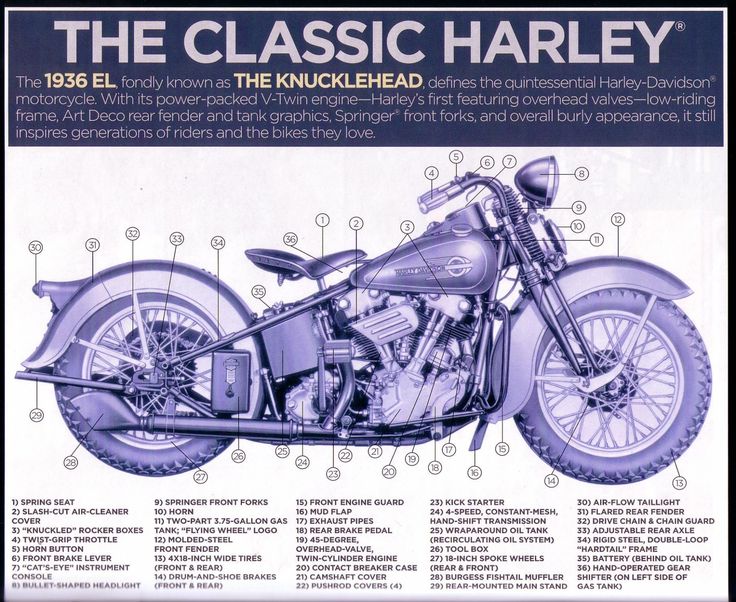 Before making the 475-mile trip home, Lance wanted a new one. We used jack stands to raise the bike. Photo by Lance Oliver.Our first task was to get the rear end of the bike up in the air. There’s lots of methods for lifting a scooter: bike jacks, ratchet straps to overhead rafters, centerstands, wheelstands, you name it. I’ve even changed tires with a bike frame up on a log before, and I’ve laid them on their sides as well. Be creative, but be careful. Lance set his bike up with a pair of swingarm spools at some point, so we just picked up the machine and put it on some plain old automotive jackstands. We did loosen the axle nut slightly while the bike was still solidly on the ground. No need to torque on it
after it's raised.
Before making the 475-mile trip home, Lance wanted a new one. We used jack stands to raise the bike. Photo by Lance Oliver.Our first task was to get the rear end of the bike up in the air. There’s lots of methods for lifting a scooter: bike jacks, ratchet straps to overhead rafters, centerstands, wheelstands, you name it. I’ve even changed tires with a bike frame up on a log before, and I’ve laid them on their sides as well. Be creative, but be careful. Lance set his bike up with a pair of swingarm spools at some point, so we just picked up the machine and put it on some plain old automotive jackstands. We did loosen the axle nut slightly while the bike was still solidly on the ground. No need to torque on it
after it's raised.
Lance's editorial comment #2: I have the swingarm spools because at home in my own garage, I'd quickly and easily raise my Versys on my rear stand. Since Lemmy only rides Shovelheads, choppers of muttly lineage and other odd junk, to which no one has ever fitted swingarm spools, he didn't have a rear stand. The jackstands worked just fine.
The jackstands worked just fine.
Next, we loosened the chain adjusters so we could slip the chain off the sprocket, and then slid out the axle. Keep track of the order of the axle hardware, especially wheel spacers. If you fail at this step, you have to put together a little jigsaw puzzle when you reassemble everything.
Lance's editorial comment #3: My tip: I like to put the spacers back on the axle in the proper order and put the nut on loosely. That keeps me from forgetting what goes where and misplacing any pieces. Plus, make a note of where the brake caliper mounting bracket fits into the scheme.
Lemmy uses a drift to coax out the axle. Photo by Lance Oliver.
Rather than let the brake caliper's weight dangle on the brake line, Lemmy suspends it using a bungee cord. Photo by Lance Oliver.Before sliding the axle out, I like to put a little chock of wood under the tire being removed to hold it up. Then I use a drift punch to drive the axle out of the wheel.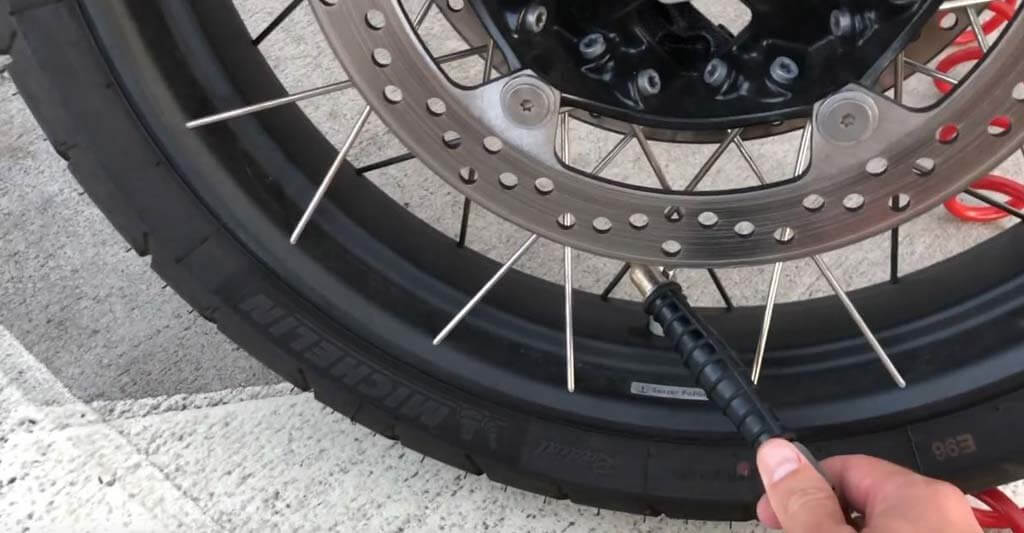 If you’re doing a front wheel, the process is the same (don't forget to loosen the pinch bolts at the bottom of most fork legs), but you will probably have to remove both brake calipers to remove the wheel. Wire the calipers up out of the way. Don’t let them dangle by the brake hoses.
If you’re doing a front wheel, the process is the same (don't forget to loosen the pinch bolts at the bottom of most fork legs), but you will probably have to remove both brake calipers to remove the wheel. Wire the calipers up out of the way. Don’t let them dangle by the brake hoses.
If you’re so inclined, now is the time to check those wheel bearings. If they feel gritty, repack or replace ‘em! Don’t forget to check the brakes while you’ve got them off, as well.
Deflate the tire by removing the valve core with a valve core tool. After the air has made its exit, it's time to break the beads. There are a multitude of ways to do this, but we elected to use a manual bead breaker. It makes quick work of an otherwise-difficult job.
This bead breaker tool Lemmy has works well. A variety of tools, from clamps to levers and wedges, are available for the job. Photo by Lance Oliver.
Lance's editorial comment #4: Breaking the bead can be the hardest part of the job, in some cases.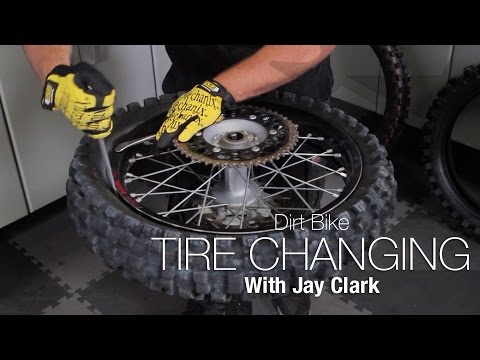 The tool Lemmy has worked like a charm. At home, I have a Harbor Freight changing stand I bought years ago. It has its drawbacks and doesn't get much respect from tool aficionados, but it has a bead breaker that works well, and that alone makes it worth its cost, to me. There are some other nifty tools that don't cost a fortune.
The tool Lemmy has worked like a charm. At home, I have a Harbor Freight changing stand I bought years ago. It has its drawbacks and doesn't get much respect from tool aficionados, but it has a bead breaker that works well, and that alone makes it worth its cost, to me. There are some other nifty tools that don't cost a fortune.
After the beads are broken on both sides, it's time to begin pulling the tire off the wheel. This part of the job is more of an art than a science. Everyone seems to find their own way of doing things. I like to work on old squares of carpet to keep from beating the tar out of the finish on the wheels.
Lemmy gets down there with the wheel, like an old-style wrassler. Photo by Lance Oliver.
Lance's editorial comment #5: Although it was mildly alarming to watch Lemmy battling my wheel and tire on his knees like an Everglades 'gator wrestler, I have to admit his methods got the job done. Personally, my knees have a lot more miles on them than Lemmy's and I prefer to work standing up.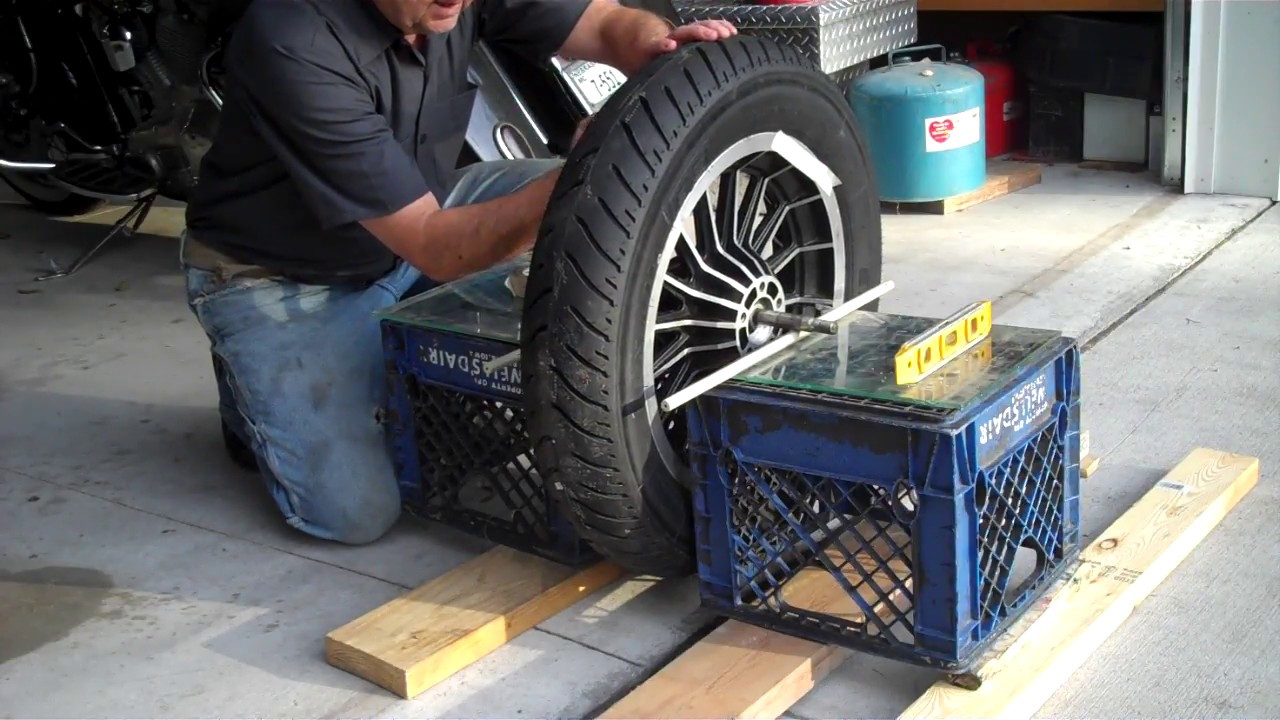 Plus, having the wheel clamped to a stand makes it easier to avoid the possibility of putting pressure on a brake rotor. If you do use the Lemmy method, keep the rotor side up to avoid leaning on it.
Plus, having the wheel clamped to a stand makes it easier to avoid the possibility of putting pressure on a brake rotor. If you do use the Lemmy method, keep the rotor side up to avoid leaning on it.
There are ways to make your own tire-changing stand, if you're lacking funds to buy one. I've seen some good homemade tire-changing setups created with a few dollars of materials: A discarded car wheel with a section of old garden hose sliced lengthwise and put on the wheel's rim for rubber protection, and a threaded rod in the center to clamp your motorcycle wheel to the car wheel. My store-bought tire-changing stand is another option. If you're ready to pay more, I've seen people change tires in a flash without breaking a sweat using one of those fancy (and pricey) No-Mar changers.
The job will go easier with the right tools. Use tire lube. They make this stuff for a reason — it works! It helps with de-mounts as well as mounting, and protects the bead from rips or tears from the tire irons.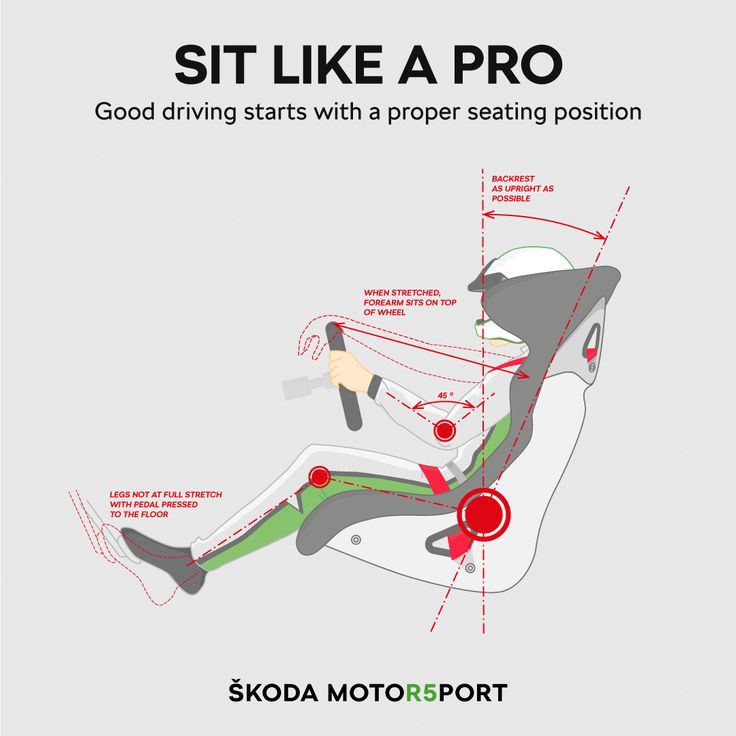
Use dedicated tire spoons. I’m not going to kid you and say I’ve never fudged it with the wrong tool, but I’ve also ruined some wheels half-assing the job alongside the road in the middle of East Jabip. Rim protectors are a great idea if you want to keep your wheels looking good. If you think I’m just pitching stuff we sell, let me dispel that notion: You can easily cut up old milk jugs, or you can use College Lemmy’s impromptu rim-saver: heater hose scraps filched from the auto parts joint.
Removing the tire is prolly the trickiest step. Use the spoons, take your time, and as Lance kept reminding me, “Take small bites!” He’s got a great point. I have a habit of getting greedy. I try to de-mount the whole dang tire at once, and it never works. It bends the spoons, makes my arms sore, and puts the delicate beads at risk. Work smart, not hard. Do little sections of bead at a time and don't forget the tire lube.
With one bead off the wheel, it's easy to see the drop-center and understand how it makes this whole process possible. Photo by Lance Oliver.Here's the most important thing to remember. The act of levering the bead over the rim lip only can happen if the bead is in the “drop-center” on the opposite side of the tire. The drop-center is the shallow channel that runs the circumference of the wheel at the center and it makes the whole process possible. If you're having to use excessive force and still can't get the bead of the tire over the lip of the rim, your problem is that the tire bead is not in the drop-center.
Photo by Lance Oliver.Here's the most important thing to remember. The act of levering the bead over the rim lip only can happen if the bead is in the “drop-center” on the opposite side of the tire. The drop-center is the shallow channel that runs the circumference of the wheel at the center and it makes the whole process possible. If you're having to use excessive force and still can't get the bead of the tire over the lip of the rim, your problem is that the tire bead is not in the drop-center.
It can be difficult because the tire doesn't want to stay in the drop-center. I typically kneel on the tire to keep it where I want it. At this point, after a few bad words, you should have one bead free of the tire. Repeat the process on the other bead, but the same side of the wheel.
Lance's editorial comment #6: I find that having a couple of different shapes of tire irons makes the job much easier. I have one long iron with a nice bend in it that's almost indispensable for that first grip on the second bead, which is harder to access than the first.
With the tire off, I give the wheel a visual inspection, and then replace the valve stem. You can either pull the old one out with a tool or just cut it out. Lance didn't have a replacement valve stem ready, so we reused the same one. You can do that, but replacing it is cheap protection.
Almost done. Rim protectors keep wheels from getting marred by tire irons. Photo by Lance Oliver.Using the directional arrows on the sidewall, check and double-check the direction of the new tire relative to the wheel. Nothing is worse than mounting it backwards and having to do the job twice. Be generous with the lube and slather the new tire’s beads. Installation of the new tire is much the same as removing the old one. Again, “take small bites” and be sure the opposite bead is in the drop-center of the wheel. If there's a small dot of paint on the sidewall, that's the balancing mark. Line it up with the heaviest part of the wheel, typically where the valve stem bolts in (see balancing section below).
Once the tire is mounted onto the wheel, you need to seat the beads. Remove the valve core from the new stem so you can inflate it faster. A large air compressor will have enough oomph! to blow the beads of most tires onto the wheel, but there are always kludgy exceptions. If your compressor’s not doing the job, there are a number of redneck ways to make the tire assume its new home. I’m not going to claim that I’ve never used ether to blow a bead onto a wheel, but I sure am not recommending anyone else do it. Bead seating tools (also known as Cheetahs) are much less dangerous. Watch your fingers during this step! I have pinched the ever-livin’ bejesus out of myself by getting my finger too close to a bead that was about to seat.
Lance's editorial comment #7: Lube is again your friend when trying to seat the beads. It encourages the bead to slide into its home and, because it is liquid, it will create tell-tale bubbles to show you where air is escaping, instead of inflating your tire.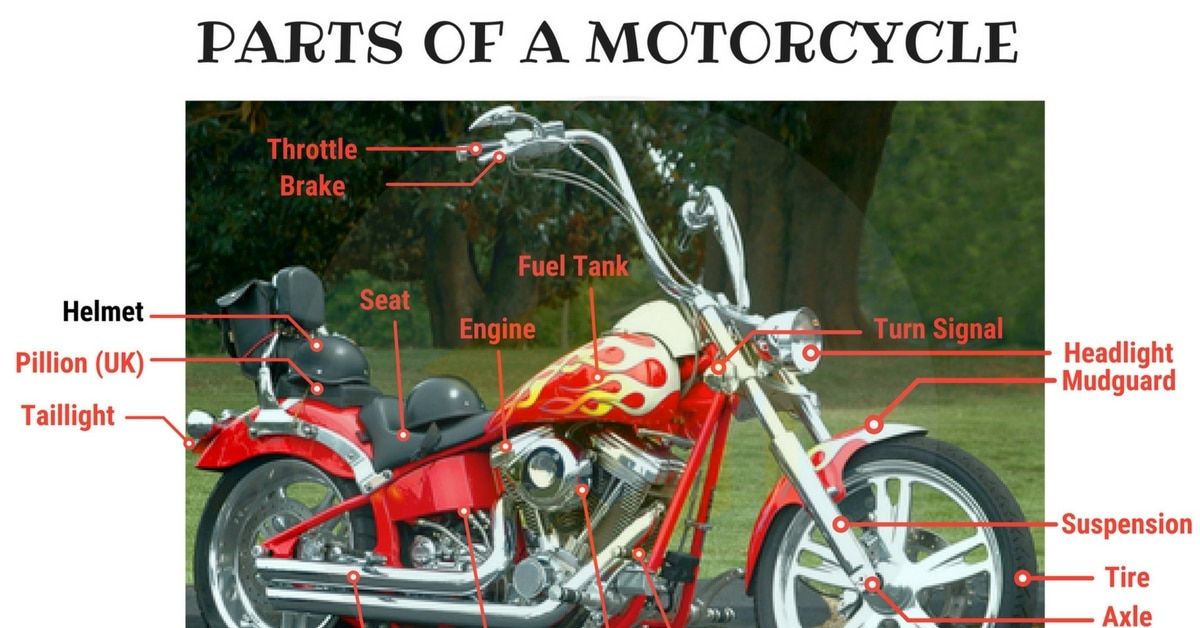 Sometimes pressing on the tread next to the spot where air is escaping past the bead will be enough to get that satisfying and loud "pop!" you're seeking.
Sometimes pressing on the tread next to the spot where air is escaping past the bead will be enough to get that satisfying and loud "pop!" you're seeking.
With the bead set, replace the valve core and adjust the inflation to the correct pressure. If you are the balancing kind of fellow, now is the time to do so. (Lance and I have similar views on balancing tires. We don’t.) Please don’t leave murderous comments about balancing. I encourage everyone to do what they feel is best with regard to tire balancing.
Lance's editorial comment #8: Uh, actually I've been known to balance tires, especially front ones and especially on a bike I'm going to take to the track and ride at higher speeds, where a vibration can show up that I never felt at street speeds.
Static balancing isn't hard. One of these balancing stands (or a homemade alternative), some stick-on wheel weights and some patience are all you need. The good news is that quality control keeps getting better, and more often these days I find tires need little or no weights to be in balance. You can also use your balancing stand on your wheel alone to determine if the valve stem area really is the heaviest spot on the wheel. That lets you know where to line up the balancing spot on the tire.
You can also use your balancing stand on your wheel alone to determine if the valve stem area really is the heaviest spot on the wheel. That lets you know where to line up the balancing spot on the tire.
With the chain back on the sprocket and the spacers and brake caliper bracket lined up in place, it's time to slide in the axle. Photo by Lance Oliver.
Lemmy's editorial comment #1: This guy sure has a lot of advice to dole out for a guy with clean hands, doesn't he?
At this stage of the game, you ought to be ready to reinstall your wheel. I put that chock of wood back in place to hold the wheel up. Reinstall your caliper (or brake assembly, if your bike has a drum brake), get all your spacers lined up in the right spots and slide the axle back in. Leave the axle nut slightly loose while you adjust the tension on the chain. Snug everything up, check the chain tension again (the chain on Lance's Versys gets tighter when you torque that axle nut), check to make sure the rear wheel is straight by sighting down the chain, lubricate the chain, put a new cotter pin in the castellated axle nut, and go ride! (Carefully, of course, so you can scrub in that new tire and make sure you have everything snugged down right.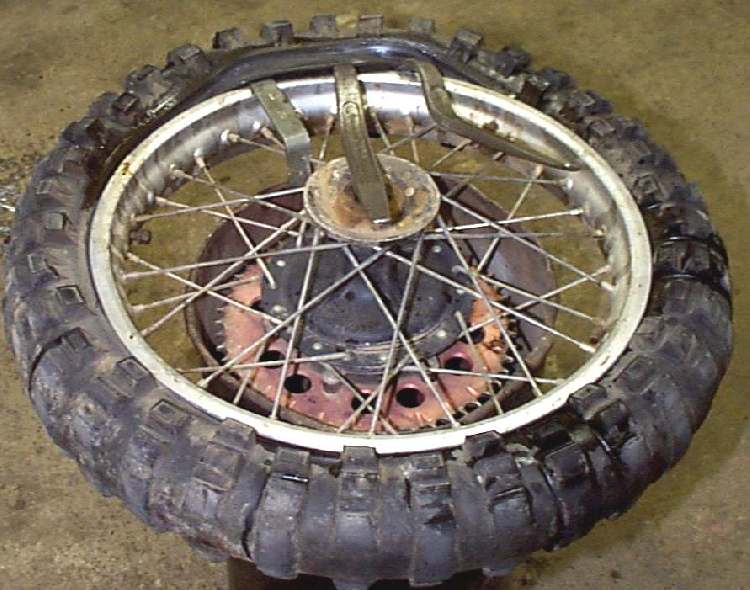 And don't forget to pump up the brakes before you ride.)
And don't forget to pump up the brakes before you ride.)
As a parting thought, keep your head about you if this is the first time you’re changin' tars. Even thousands of tires later, these things still get me riled up. Beads don’t seat, tires won’t get onto their rims. It's always something. Patient and methodical work gets the job done, so don't get discouraged!
Introduction
What is the pressure in motorcycle tires?
How to properly set tire pressure?
What is the result of under/over pressure in motorcycle tires?
Conclusion
The safety and reliability of riding a motorcycle depends not only on which tires are used, but also on what level of pressure is maintained inside. It is very dangerous to treat this carelessly. And why and how to correctly calculate the pressure in motorcycle tires - read our article and find out.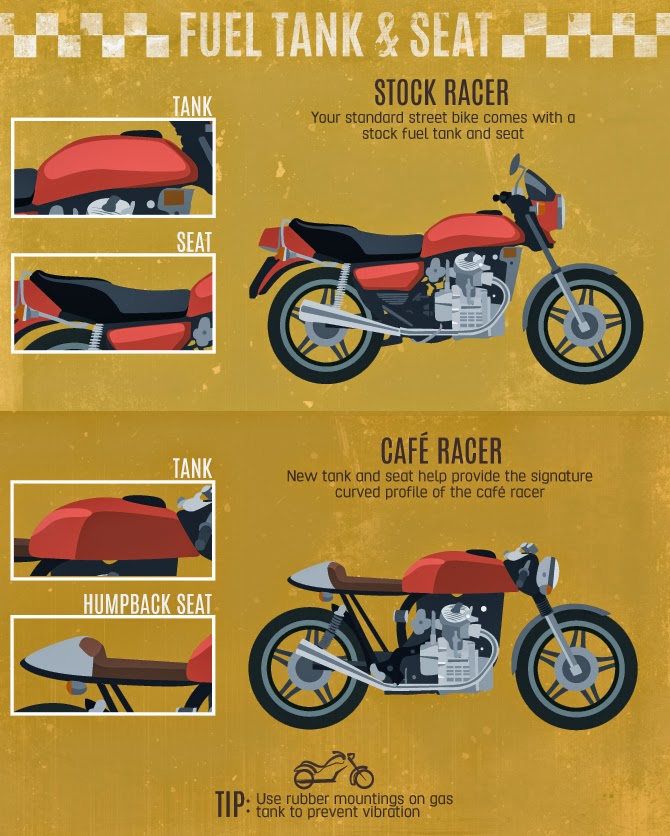
Air, like any substance, expands when heated and contracts when cooled. This is also true for motorcycle tires - when hot, one level of pressure is maintained inside the tires, and when it is cold, it is completely different. Tire pressure is important, as it is responsible for the most important characteristics for any bike - both scooter and sport enduro:
Handling and maneuverability on dry and wet surfaces;
The size of the contact patch is directly responsible for traction;
Suspension workload;
Fuel consumption;
Wear resistance.
In short, only correctly inflated tires can do their job well - to keep contact with the track and not lose it throughout the entire trip. Any deviation from the norm (lack or excess of pressure) is fraught with unpleasant consequences.
Front and rear tires must have different pressures and this is important to understand before handling the pump.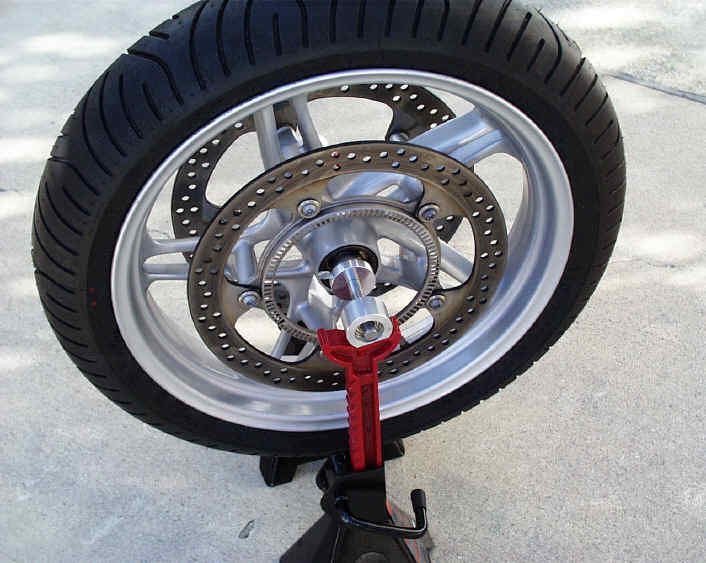 The owner's manual of any bike always indicates the optimal pressure for cold tires, so if you measure the indicators immediately after the ride, do not be surprised that the pressure gauge will show different values - the air inside has warmed up and expanded.
The owner's manual of any bike always indicates the optimal pressure for cold tires, so if you measure the indicators immediately after the ride, do not be surprised that the pressure gauge will show different values - the air inside has warmed up and expanded.
The manufacturer indicates all parameters of cold rubber inflation on the table on the motorcycle frame or in the user manual. They vary depending on the type of motorcycle, but, as a rule, the data varies between 2.0-2.5 atm for the front wheel and 2.2-2.9Atm for rear. If you plan to put another person on the bike, we recommend inflating the tires by 0.2 atm.
| Wheel size | Pressure, front/rear, kgf/cm2 (atm) | |
|---|---|---|
| Normal load | Full load | |
| 100/60-10 | 2.2/2.3 | 2.3/2.4 |
| 130/60-13 | 1. | 2.0/2.2 |
| 130/70-12 | 2.2/2.3 | 2.3/2.4 |
| 120/70-12 | 2.25/2.3 | 2.3/2.4 |
| 110/70-12 | 2.2/2.3 | 2.3/2.4 |
| 120/80-12 | 1.8/2.0 | 2.0/2.2 |
| 130/70-10 | 1.8/2.0 | 2.0/2.2 |
| 100/90-10 | 1.9/2.1 | 2.0/2.2 |
| 120/90-10 | 1.8/2.0 | 2.0/2.2 |
| 130/90-10 | 1.9/2.1 | 2.0/2.2 |
| 3.0×10 | 1.75/2.0 | 2.0/2.1 |
| 3.50×10 4PR | 2.5/2.5 | 2.6/2. |
Hot pressure depends on many factors up to the riding style of the rider, so they will have to be selected individually for each specific case:
To begin with, inflate the tires to 2-2.3 atm, given that for the rear tire the pressure should always be 0.3 atm more than for the front.
Ride at your normal pace for 10-15 minutes. The pressure in the rear and front tires should increase by an average of 0.2 atm.
Then use the pressure gauge again: if it shows a value within the normal range of cold pressure, then you have achieved your goal. If it is higher, then lower the wheels, if lower, pump up. Measure tire pressure and adjust the amount of air inside until you get the result.
If you notice a slight discomfort immediately after the start, this is normal. The rubber needs to warm up a little and after five minutes everything will return to normal.
If you overinflate your tyres, get ready for the fact that the contact patch will decrease, and with it the traction will deteriorate, the ride will become much harder, there will be a possibility of vibration, and the load on the suspension will also increase significantly. Riding in over-inflated tires on a wet road is quite dangerous, because due to the small contact area, the motorcycle will begin to skid in corners and brake poorly. The most unpleasant consequence will be a deterioration in strength and wear resistance. Motoshina can even explode when driving on hot asphalt - one pebble can cross out everything.
Riding in over-inflated tires on a wet road is quite dangerous, because due to the small contact area, the motorcycle will begin to skid in corners and brake poorly. The most unpleasant consequence will be a deterioration in strength and wear resistance. Motoshina can even explode when driving on hot asphalt - one pebble can cross out everything.
Increased tire pressure is used only in two cases: if there is another passenger on the motorcycle or during long high-speed races.
Under-inflated tires have their own list of problems: their contact patch may be larger, but due to its irregular shape, it wears out and deforms extremely quickly. Of the useful qualities of rubber, handling, maneuverability, directional stability and fuel consumption are seriously affected. In the end, if you do not correct the pressure in the motorcycle tires, everything will end with a cord detachment. If your motorcycle has wheels with chambered tires, then insufficient inflation of the chambers will sooner or later lead to accidental disassembly.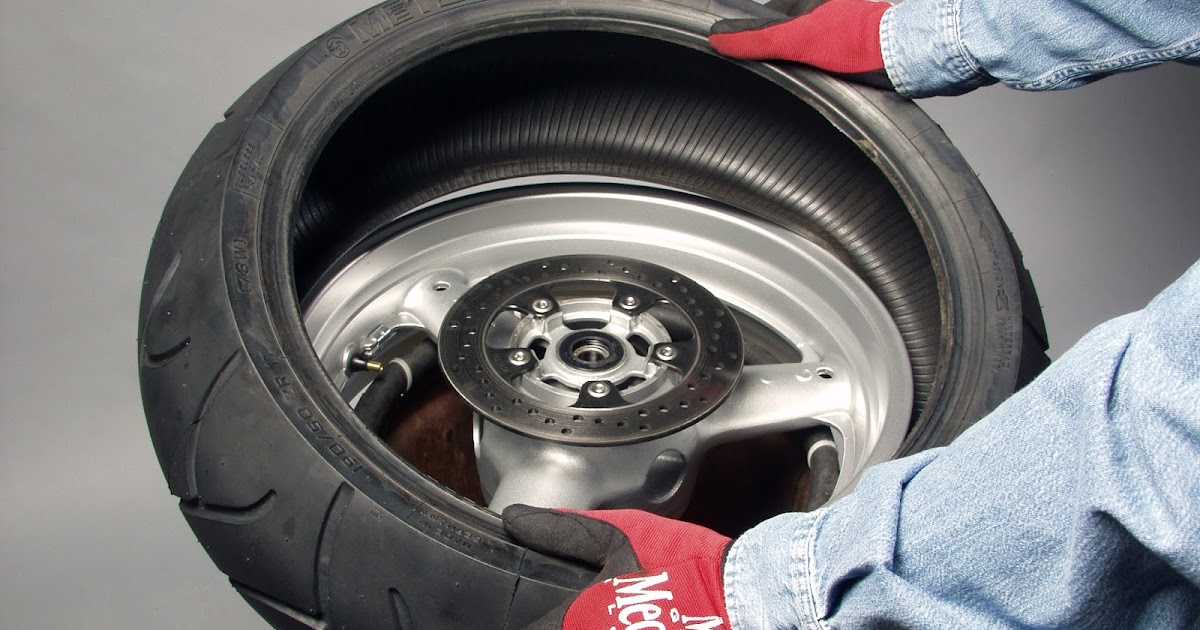
Riding on underinflated tires is practiced only on special enduro sports bikes for off-road stunts.
However, in order to calmly control a motorcycle, it is not enough just to set the correct tire pressure and calm down on this - we also recommend that you refer to the speed index table.
| Speed index | Maximum speed, km/h |
|---|---|
| A | 40 |
| B | 50 |
| C | 60 |
| 65 | |
| E | 70 |
| F | 80 |
| G | 90 |
| J | 100 |
| K | 110 |
| L | 120 |
| M | 130 |
| N | 140 |
| P | 150 |
| Q | 160 |
| R | 170 |
| S | 180 |
| T | 190 |
| U | 200 |
| H | 210 |
| V | 240 |
| W | 270 |
| Y | 300 |
| VR | >210 |
| ZR | >240 |
| (W) | >270 |
| Z | >300 |
It is forbidden to put tires with a low speed index on high-speed motorcycles - they may not cope with the capabilities of the motorcycle, which will not lead to anything good.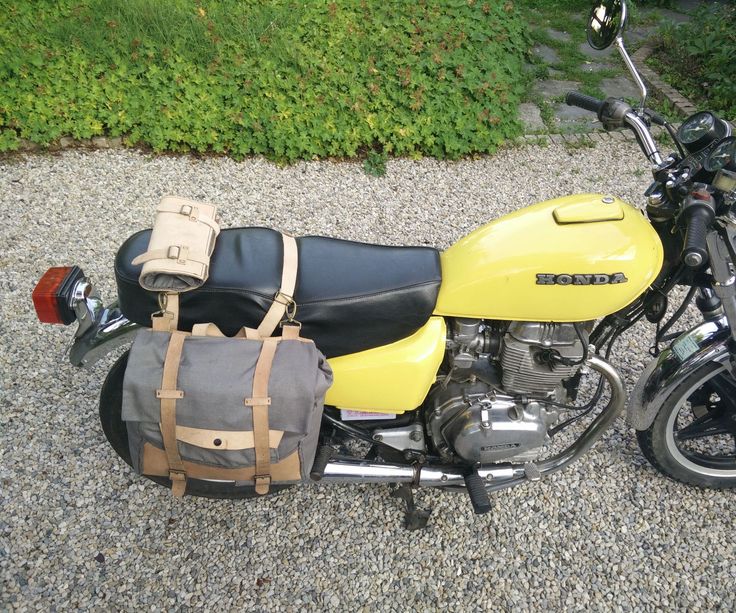
It is very important to check the pressure in the motorcycle tires in time to always be aware of its technical condition and not provoke a breakdown. Owners of sports and cross-country bikes, who constantly experience heavy loads, have to control it especially closely. It is the accuracy of the measuring device - the pressure gauge - that is extremely important. Often the point is not at all in the setting, but in a bad device that simply gives false readings. If the error reaches 0.5 Atmospheres, then you better choose another device for yourself. In the BlackTyres online store, you can easily find a reliable pressure gauge, and with it the right pressure in motorcycle tires, which will help them to reveal their best sides and characteristics.
Having bought and installed new tires on a motorcycle, do not rush to check it grip at top speeds and lean angles. Every new tire must undergo a run-in, during which its frame, bandage and rubber layer run in and reach the calculated characteristics. It's believed that distance 100 km. enough to break in a new wheel. After passing it, forget to check the pressure in the wheel, as well as inspect it for correct fit and possible violation of geometry. If none There were no problems - the wheel is ready for full operation. Necessary remember that most models of motor tires before operation covered with a special composition that prevents its drying and aging during storage time. It is believed that the rubber coated with this composition retains their properties for five years. Having installed a new wheel, it is necessary gently wipe off this layer during running-in, gradually increasing the angle tilt the motorcycle to the maximum values you use when operation. But remember that by erasing the protective composition, you are launching drying process of the rubber compound. And after 2 years, regardless of mileage, the wheel will need to be changed.
Every new tire must undergo a run-in, during which its frame, bandage and rubber layer run in and reach the calculated characteristics. It's believed that distance 100 km. enough to break in a new wheel. After passing it, forget to check the pressure in the wheel, as well as inspect it for correct fit and possible violation of geometry. If none There were no problems - the wheel is ready for full operation. Necessary remember that most models of motor tires before operation covered with a special composition that prevents its drying and aging during storage time. It is believed that the rubber coated with this composition retains their properties for five years. Having installed a new wheel, it is necessary gently wipe off this layer during running-in, gradually increasing the angle tilt the motorcycle to the maximum values you use when operation. But remember that by erasing the protective composition, you are launching drying process of the rubber compound. And after 2 years, regardless of mileage, the wheel will need to be changed.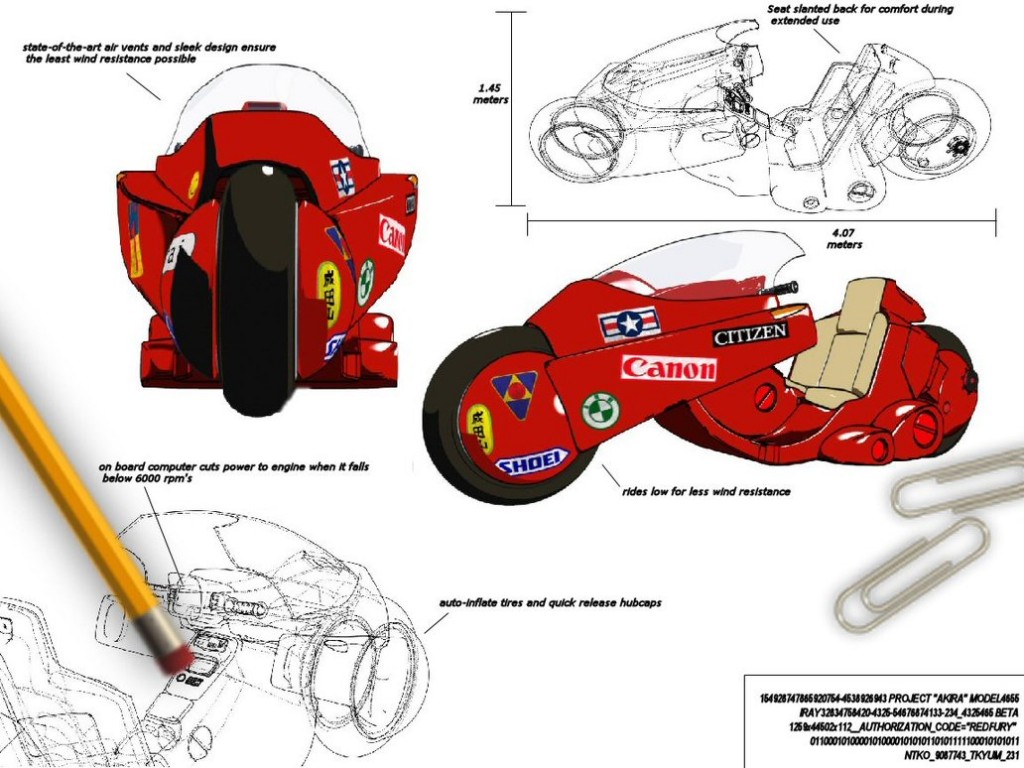 It must be remembered that tires require running-in not only before operation, but also after winter storage. On the surface of the wheel, a layer of dried rubber, which must be carefully wiped off during the first trips to new season.
It must be remembered that tires require running-in not only before operation, but also after winter storage. On the surface of the wheel, a layer of dried rubber, which must be carefully wiped off during the first trips to new season.
Tire pressure
If you bought your the motorcycle is new, in the salon of an official dealer, then it must be there should be a sticker indicating the recommended pressure for the front and rear wheel. As a rule, this information is placed on the back motorcycle pendulum. Further, most motorcyclists are guided precisely by the numbers indicated in it, naively believing that they have optimal pressure for all occasions. In fact, indicated on pendulum sizes, at best, are suitable for rubber, which The motorcycle is equipped at the factory. In reality, in order to choose the optimal pressure in the wheel, we need to take into account not only motorcycle model, but also the tire model, the weight of passengers and luggage, as well as conditions for that particular trip.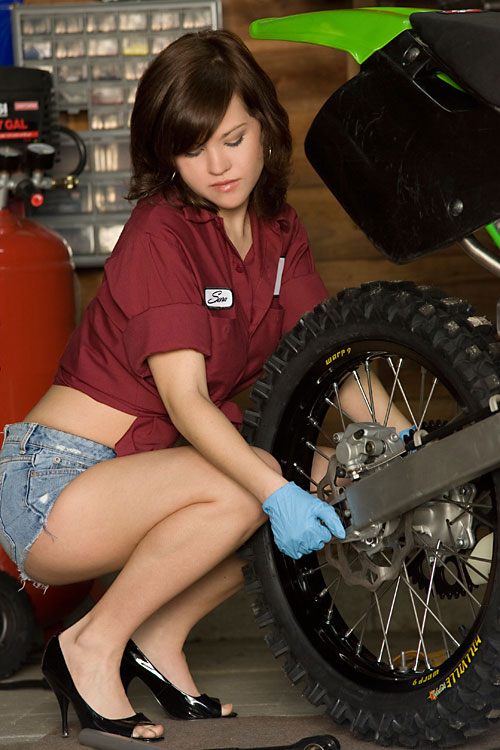 And the first thing you need repel - a rubber model installed on a motorcycle. Each the manufacturer of motorcycles places on its website information about recommended pressure in each of the models of its tires. In these data features not only of the type of interest to us are taken into account much better motor tires (tourist, sports, etc.), but also constructive features of each model and the technologies used in it. Especially this relevant when the motorcycle is used "not for its intended purpose."
And the first thing you need repel - a rubber model installed on a motorcycle. Each the manufacturer of motorcycles places on its website information about recommended pressure in each of the models of its tires. In these data features not only of the type of interest to us are taken into account much better motor tires (tourist, sports, etc.), but also constructive features of each model and the technologies used in it. Especially this relevant when the motorcycle is used "not for its intended purpose."
For example, when touring tires are installed on a sportbike and go on a trip; or when the road builder begins to be used for training at the kart track with the installation of uncompromising racing slicks. Remember, in such cases, you need to focus not on the recommendations motorcycle manufacturers, but to the information of the engineers who developed your tire model. But that's not all! If you return to earth and look at the actual operating conditions of motor rubber, then we will see that on the same tires someone goes to work and to the place parties, someone travels to neighboring regions and countries, and someone does not gets out of the kart track.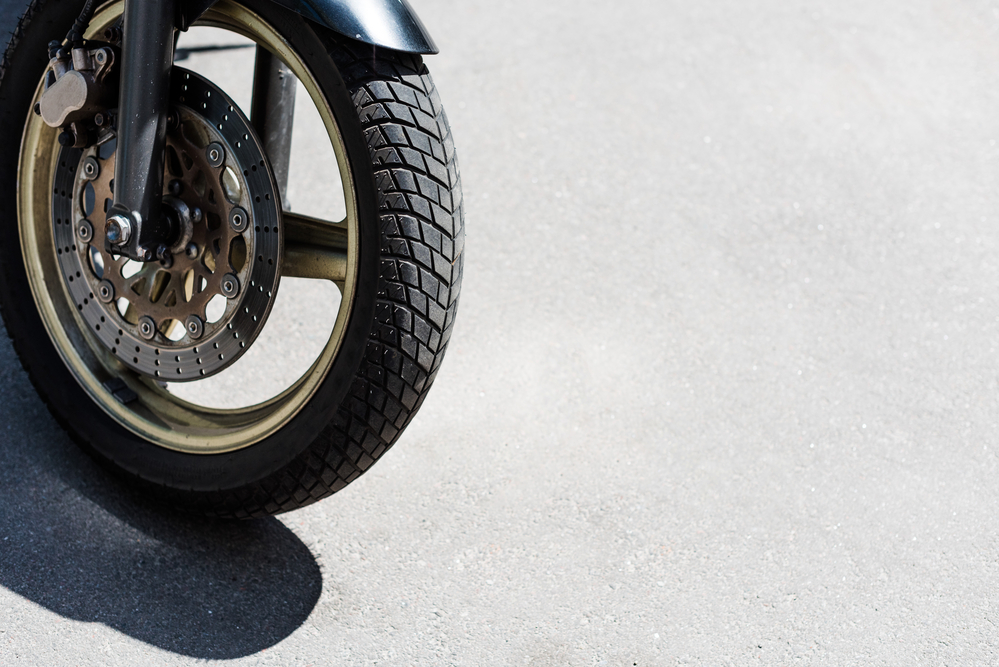 How to adjust the pressure in each of these cases? General recommendations will be quite simple. Suppose you have a road bike with the recommended pressure: 2.25 BAR - on the front, and 2.5 BAR - on the rear wheel. If you have road or road-sport tires installed, this pressure more suitable for a tourist trip on a lightly loaded motorcycle. AT in this case, the contact patch will be smaller, the tire will be smaller prominatsya, and accordingly, its wear will go more slowly. If you traveling with a passenger and a few cases for very long distances and at high speeds, it is better to increase the pressure in the rear wheel up to 2.8 - 3.0 BAR. After running several thousand kilometers in in this mode, on the rear wheel, most likely, a smooth grinded area. But the carcass of the tire will not suffer, and there is no danger of its destruction. will arise. The pressure in the front wheel should not be raised above 2.5 BAR for powerful heavy motorcycles, and 2.3 BAR - on medium-sized vehicles.
How to adjust the pressure in each of these cases? General recommendations will be quite simple. Suppose you have a road bike with the recommended pressure: 2.25 BAR - on the front, and 2.5 BAR - on the rear wheel. If you have road or road-sport tires installed, this pressure more suitable for a tourist trip on a lightly loaded motorcycle. AT in this case, the contact patch will be smaller, the tire will be smaller prominatsya, and accordingly, its wear will go more slowly. If you traveling with a passenger and a few cases for very long distances and at high speeds, it is better to increase the pressure in the rear wheel up to 2.8 - 3.0 BAR. After running several thousand kilometers in in this mode, on the rear wheel, most likely, a smooth grinded area. But the carcass of the tire will not suffer, and there is no danger of its destruction. will arise. The pressure in the front wheel should not be raised above 2.5 BAR for powerful heavy motorcycles, and 2.3 BAR - on medium-sized vehicles. If you increase the pressure in the front wheel even more, then the tire life this will not increase, and the likelihood of losing grip on braking will increase.
If you increase the pressure in the front wheel even more, then the tire life this will not increase, and the likelihood of losing grip on braking will increase.
In the city, motorcyclists most often ride without a passenger, perform more maneuvers, accelerations and decelerations. Resource Importance tires in this case gives way to grip properties. The price of a mistake loss of grip and unplanned slipping can be unnecessarily high. Under these conditions, on an average motorcycle with a weight about 200 kg., in road and sports tires it makes sense to maintain pressure is about 2.2 BAR in both tires. Thus, we increase the spot contact and help the rubber warm up faster for better grip. Naturally, the life of the tire decreases with decreasing pressure. But you need to be aware of what is more important: the durability of rubber or traction reserve. On powerful liter motorcycles, loads on the rear wheel - and therefore wear - is even higher. And only myself the owner chooses a balance between traction and wear rate rear wheel. Finally, a go-kart or racing track. Place, where tire life is irrelevant. Only coupling parameters are important rubber with the canvas of the race track. Numerous experiments and experiences, undertaken by people who regularly test motorcycles at karting tracks and racing tracks - by motorcycle journalists, experts and athletes - show that the majority of sports, road and road-tourist tires provide better traction at a pressure of 2.1 BAR - on front wheel, and 1.9BAR - on the back, on cold tires. For some rubber models, this value may vary slightly, but in most cases, its difference is within the error of the usual pressure gauge manufactured in the People's Republic of China. Further lowering pressure does not add grip, and only worsens motorcycle handling. When the pressure in the front wheel drops below 1.9 BAR, when cornering, the motorcycle steering wheel starts to break, then is, he tries to turn in the direction of the turn. If the rear tire loses pressure up to 1.
Finally, a go-kart or racing track. Place, where tire life is irrelevant. Only coupling parameters are important rubber with the canvas of the race track. Numerous experiments and experiences, undertaken by people who regularly test motorcycles at karting tracks and racing tracks - by motorcycle journalists, experts and athletes - show that the majority of sports, road and road-tourist tires provide better traction at a pressure of 2.1 BAR - on front wheel, and 1.9BAR - on the back, on cold tires. For some rubber models, this value may vary slightly, but in most cases, its difference is within the error of the usual pressure gauge manufactured in the People's Republic of China. Further lowering pressure does not add grip, and only worsens motorcycle handling. When the pressure in the front wheel drops below 1.9 BAR, when cornering, the motorcycle steering wheel starts to break, then is, he tries to turn in the direction of the turn. If the rear tire loses pressure up to 1. 6 BAR, then in corners the rear of the motorcycle begins to float on the asphalt, there is a feeling, best of all characterized by the word "mess". Considering that the pressure used on sports tracks, allows to the greatest extent realize the grip properties of motor rubber, many use it when driving in the city, where the stock on the handle can be a great help when detour maneuver or emergency braking. But it must be understood that tire wear at this pressure will be higher, and its resource is less. Special mention deserves powerful sportbikes, on the pendulums of which are often indicated the recommended pressure 2.5 - 3.0 BAR. It must be understood that such motorcycles tires wear much more intensively. And a resource of the same model rear wheel on a road bike and on some "Eradin" will be differ by 2 times. Some of the recommended high pressure allows slightly extend the difficult life of the "cylinders" on such motorcycles. But not it is worth harboring illusions. When trying to go through a turn "with a knee" such high tire pressure can easily put you on a slippery slope.
6 BAR, then in corners the rear of the motorcycle begins to float on the asphalt, there is a feeling, best of all characterized by the word "mess". Considering that the pressure used on sports tracks, allows to the greatest extent realize the grip properties of motor rubber, many use it when driving in the city, where the stock on the handle can be a great help when detour maneuver or emergency braking. But it must be understood that tire wear at this pressure will be higher, and its resource is less. Special mention deserves powerful sportbikes, on the pendulums of which are often indicated the recommended pressure 2.5 - 3.0 BAR. It must be understood that such motorcycles tires wear much more intensively. And a resource of the same model rear wheel on a road bike and on some "Eradin" will be differ by 2 times. Some of the recommended high pressure allows slightly extend the difficult life of the "cylinders" on such motorcycles. But not it is worth harboring illusions. When trying to go through a turn "with a knee" such high tire pressure can easily put you on a slippery slope.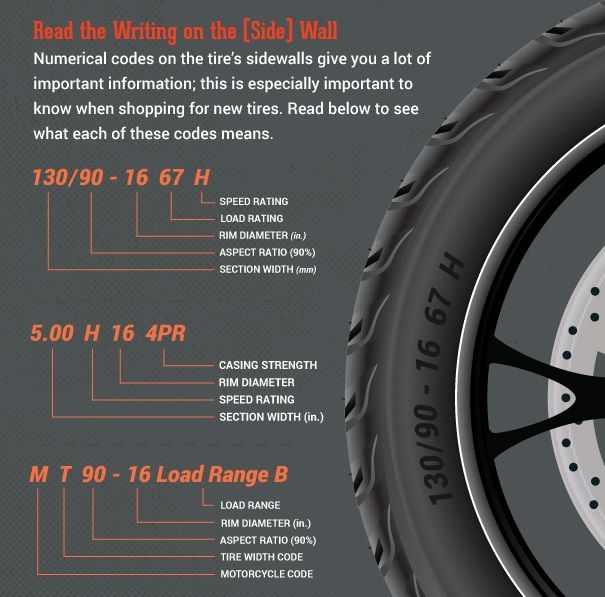 If a if you regularly train on sports tracks, then, most likely, Your motorcycle already has special racing tires. As it was It is said that this rubber has a special thermal regime. And if for normal sports rubber working temperature is considered to be 50 ° C - 60 ° C, then the temperature of racing tires in a warm state reaches 100 ° C. Naturally, the pressure in such rubber in the last laps of the race and in cold state is seriously different. Typically, back pressure wheel "cold" in such tires ranges from 1.4 BAR to 1.6 BAR, and in the front - from 1.5 BAR to 2.1 BAR. Such low values are often shock newbies who see their new "liter" sportbike figures 2.9BAR. But these are the indicators allow the tires to quickly warm up to the design temperature and increase tire pressure to operating values. In this case, if you are not highly experienced road racer playing with tire pressure, adjusting the behavior of the motorcycle to the characteristics of various tracks, we recommend that you strictly adhere to the values recommended for your specific racing rubber by its manufacturer.
If a if you regularly train on sports tracks, then, most likely, Your motorcycle already has special racing tires. As it was It is said that this rubber has a special thermal regime. And if for normal sports rubber working temperature is considered to be 50 ° C - 60 ° C, then the temperature of racing tires in a warm state reaches 100 ° C. Naturally, the pressure in such rubber in the last laps of the race and in cold state is seriously different. Typically, back pressure wheel "cold" in such tires ranges from 1.4 BAR to 1.6 BAR, and in the front - from 1.5 BAR to 2.1 BAR. Such low values are often shock newbies who see their new "liter" sportbike figures 2.9BAR. But these are the indicators allow the tires to quickly warm up to the design temperature and increase tire pressure to operating values. In this case, if you are not highly experienced road racer playing with tire pressure, adjusting the behavior of the motorcycle to the characteristics of various tracks, we recommend that you strictly adhere to the values recommended for your specific racing rubber by its manufacturer.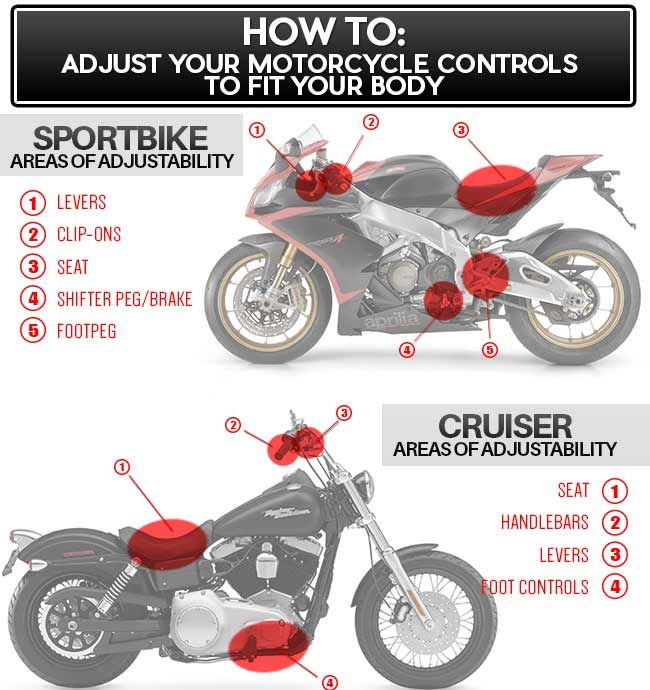
Cross tire pressure
Tire pressure for motocross uses 1.2-0.8 BAR. The main rule: the softer the soil, the higher the pressure. At the same time, it is necessary to take into account both the properties of a particular tracks, and the style of the rider. In classic enduro, instead of chambers, mousses with different pressures are used: 0.4-0.9 BAR, depending on the type of tracks.
Custom tire selection
On various forums, you can often find questions from beginners motorcyclists regarding the possibility of installing a larger rear wheel width than the stock bike. Most often this explained by the fact that in their eyes a wide rear wheel looks more sporty and attractive compared to narrow. Often some draw analogies with automobile wheels of larger diameter and width. We will not argue that no matter how wide the wheel stands on old "Super-van", in the eyes of beautiful strangers, she still does not will compete with the shiny and illuminated "Golda". But just Let's try to understand the physics of the process. So, what can we expect if we firmly decided to install a non-standard rear wheel with a larger width on the motorcycle. First the problem we will face is that the rim remains the same with us width as before. That is, a wheel of greater width stretched over a narrow the rim does not get wider. It flattens and becomes higher than stock. Its diameter grows, the speedometer starts to lie, rises a little back of the motorcycle. But most importantly, carefully calculated the tire profile is violated by the manufacturer. In 2012 in Russian championship ShKMG approved a single type and size of rubber for all classes and types of motorcycles - 190/55/17. While the rear disc 600cc sportbike wheels are sized 180/55/17. Big Such a replacement did not bring any changes to the behavior of the motorcycle. Although some athletes, for example, Ilona Sergeeva, noted the worst hold on non-standard rubber in the limiting angles of inclination.
But just Let's try to understand the physics of the process. So, what can we expect if we firmly decided to install a non-standard rear wheel with a larger width on the motorcycle. First the problem we will face is that the rim remains the same with us width as before. That is, a wheel of greater width stretched over a narrow the rim does not get wider. It flattens and becomes higher than stock. Its diameter grows, the speedometer starts to lie, rises a little back of the motorcycle. But most importantly, carefully calculated the tire profile is violated by the manufacturer. In 2012 in Russian championship ShKMG approved a single type and size of rubber for all classes and types of motorcycles - 190/55/17. While the rear disc 600cc sportbike wheels are sized 180/55/17. Big Such a replacement did not bring any changes to the behavior of the motorcycle. Although some athletes, for example, Ilona Sergeeva, noted the worst hold on non-standard rubber in the limiting angles of inclination.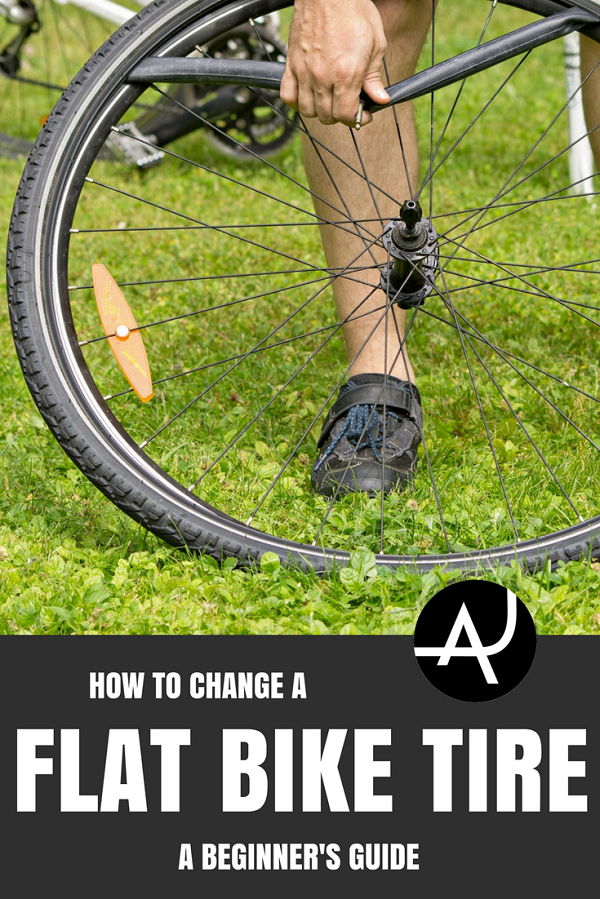 Another example the use of a narrow rim and a wide tire can serve motorcycles KTM RC 390 and KTM Duke 390. In stock, they are equipped with a rear wheel size 150/60-17 steps, on the rear tire there is still almost a centimeter strip unused rubber. This means that to use the entire area we will not succeed on the surface of the tire, and the contact patch will be lower calculated for this model in this size. All this raises questions concerning the optimality of the selected rubber size. To this nuance we noticed back in May 2014, during the test KTM Duke 390. And in July 2015, during the shooting of the RC 390 at the Firsanovka karting track, the racer of the MotoRRika team, Ivan Gorev did not take into account this feature of the motorcycle and sent the KTM into slippery condition by missing the rear wheel.
Another example the use of a narrow rim and a wide tire can serve motorcycles KTM RC 390 and KTM Duke 390. In stock, they are equipped with a rear wheel size 150/60-17 steps, on the rear tire there is still almost a centimeter strip unused rubber. This means that to use the entire area we will not succeed on the surface of the tire, and the contact patch will be lower calculated for this model in this size. All this raises questions concerning the optimality of the selected rubber size. To this nuance we noticed back in May 2014, during the test KTM Duke 390. And in July 2015, during the shooting of the RC 390 at the Firsanovka karting track, the racer of the MotoRRika team, Ivan Gorev did not take into account this feature of the motorcycle and sent the KTM into slippery condition by missing the rear wheel.
If we are not satisfied with a simple replacement of rubber while maintaining standard disc, and we decided to go further by installing on our motorcycle rear rim of a larger width, then others stand in our way Problems. It is necessary that the disk and wheel are properly located in pendulum and did not touch it when moving. Driven star custom disk can be shifted to the side relative to the leading star, which quickly "finish off" the chain of the motorcycle. If all these problems we succeeded get around, then we, as planned, get a motorcycle with a rear wheel wider than the original. Trying to ride on such a motorcycle, we note that its handling has noticeably deteriorated. And now it's required more effort in order to "put" the bike in a turn. Why is that happened? The fact is that a motorcycle with a wide rear wheel for going through the same turn at the same speed tilt to a greater angle, while applying more effort. Exactly therefore, engineers and experts are well aware of the rule: than already installed on a motorcycle with wheels, the more willingly it “dives” into a turn and steers easier.
It is necessary that the disk and wheel are properly located in pendulum and did not touch it when moving. Driven star custom disk can be shifted to the side relative to the leading star, which quickly "finish off" the chain of the motorcycle. If all these problems we succeeded get around, then we, as planned, get a motorcycle with a rear wheel wider than the original. Trying to ride on such a motorcycle, we note that its handling has noticeably deteriorated. And now it's required more effort in order to "put" the bike in a turn. Why is that happened? The fact is that a motorcycle with a wide rear wheel for going through the same turn at the same speed tilt to a greater angle, while applying more effort. Exactly therefore, engineers and experts are well aware of the rule: than already installed on a motorcycle with wheels, the more willingly it “dives” into a turn and steers easier.
Therefore, even on powerful "liter" sportbikes, for which each square millimeter of wheel adhesion with asphalt is worth its weight in gold, rarely you can see rear tires wider than 190mm.